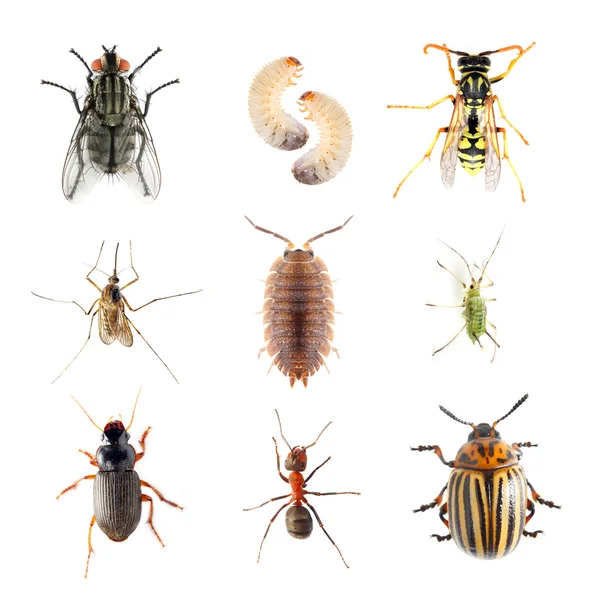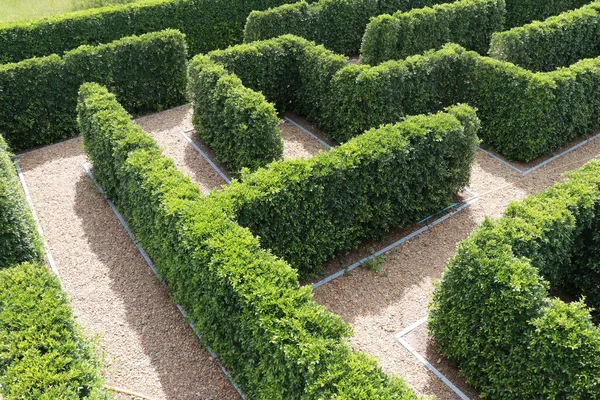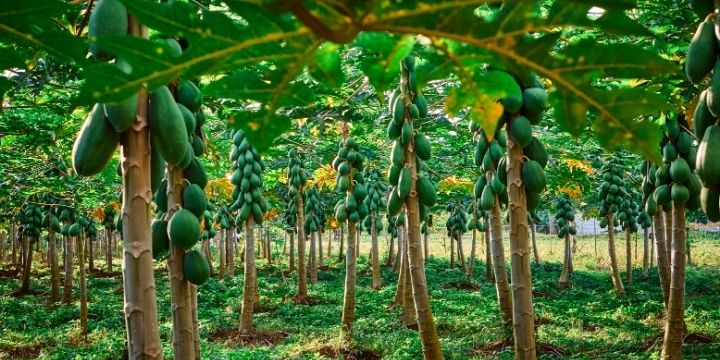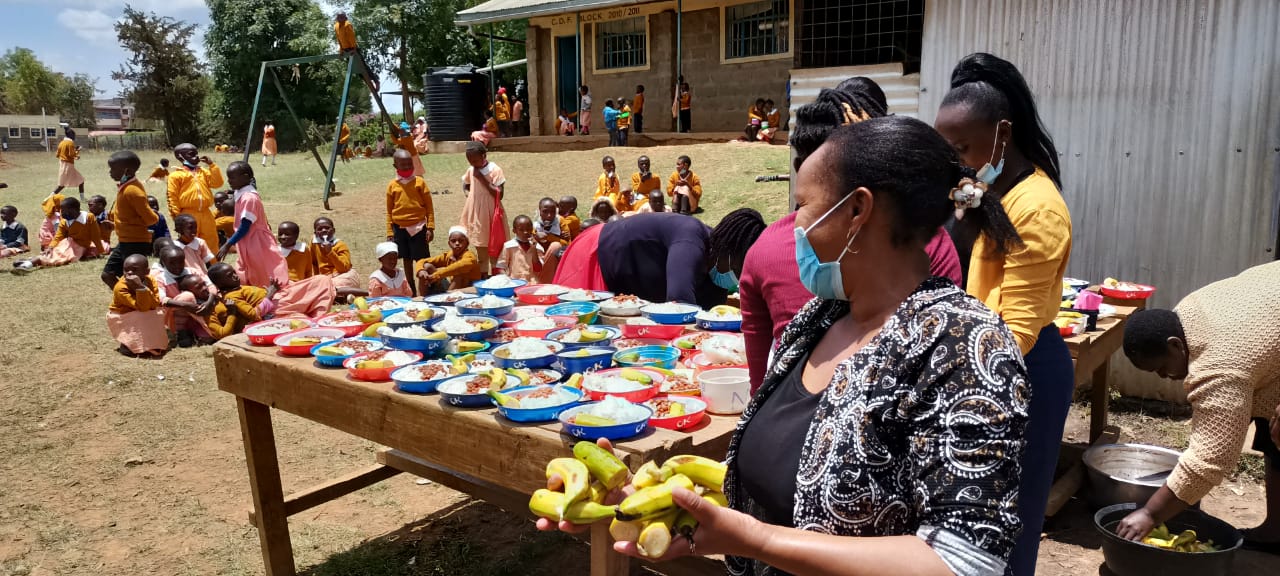Farming is a very profitable agribusiness, but when unwanted garden pests invade, that sense of satisfaction can quickly turn to frustration. From nibbling on leaves to destroying crops, common garden pests can wreak havoc on your hard work seemingly overnight. Whether you’re dealing with aphids, caterpillars, or beetles, these pests not only damage plants but can also affect your garden’s overall health and productivity. Understanding how to identify them early is the first step to reclaiming control of your green space.
But spotting garden pests is only half the battle. To truly protect your garden, you need effective pest management strategies that go beyond quick fixes. This guide will walk you through identifying common garden pests and provide proven, eco-friendly methods to manage them. By staying proactive, you can keep your plants healthy and thriving, without the constant worry of infestations. Let’s dig in and learn how to outsmart these garden invaders!
How to identify garden pests
Garden pests are organisms, typically insects, animals, or microorganisms, that feed on or damage plants in gardens, negatively impacting the health and productivity of the plants. These pests can harm plants by consuming leaves, stems, roots, fruits, or seeds, spreading diseases, or weakening plants through other means. Common types of garden pests include insects like aphids, caterpillars, and beetles, as well as animals like rabbits or moles. Additionally, some microorganisms, such as fungi, bacteria, and nematodes, can act as garden pests by causing infections or diseases in plants.
1. Greenflies (Aphids)
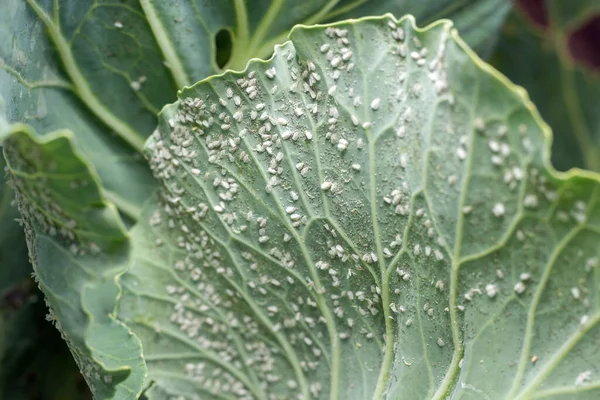
As a farmer, you’ll know you have aphids in your garden when you notice tiny, soft-bodied insects on the underside of leaves, usually clustered together. These pests come in colors like green, black, or yellow and suck the sap from your plants, causing the leaves to curl, turn yellow, or look distorted. You might also see a sticky substance on the leaves, which is honeydew that they leave behind. If you see ants crawling around, they’re likely attracted to this honeydew.
- Damage: Suck sap from plants, leading to wilting and stunted growth. They can also transmit plant diseases.
- Management: Introduce ladybugs, which feed on aphids, or use insecticidal soap for severe infestations. Regularly spraying plants with water can also help dislodge them.
Read More: How to control aphids from your plants permanently
2. Black Flies
Black flies are tiny, dark-colored insects, often smaller than a grain of rice, and you’ll usually spot them flying in swarms around your plants. If you notice small, black flies buzzing around moist soil or hovering near the base of your plants, especially in damp or shaded areas, you likely have black flies. They don’t feed on the plants directly, but their larvae can live in the soil and damage the roots. If your plants start wilting or showing stunted growth, black flies could be part of the problem. Also, check for adults resting on leaves or flying low near the ground.
- Damage: They can damage leaves by sucking sap and leave behind a sticky residue.
- Management: Remove debris and maintain dry soil conditions. Use sticky traps to catch adult flies.
3. Flea Beetles
One of the easiest ways to identify flea beetles in your garden is by their quick, jumping movements, similar to fleas, when disturbed. These tiny, shiny beetles are often black, brown, or metallic and leave behind small “shotgun” holes in plant leaves as they feed. If you notice tiny holes peppering your seedlings, especially on leafy vegetables, it’s likely flea beetles are the culprits. Keep an eye on your plants in the morning or during cooler parts of the day when flea beetles are most active.
- Damage: They chew small holes in leaves, leading to a “shot-hole” appearance.
- Management: Use row covers to protect seedlings, and introduce beneficial nematodes to reduce their larvae population.
4. Carrot Flea Beetles
If you’re noticing tiny, dark beetles hopping around your carrot plants, chances are you’re dealing with carrot flea beetles. These garden pests are quick to jump when disturbed and leave behind distinct feeding damage—small, round holes scattered across the leaves, often giving them a “peppered” look. The damage is usually most severe on younger plants, so if your seedlings have stunted growth and holey leaves, carrot flea beetles may be the culprits. Keep an eye out for their shiny black or bronze bodies as they move quickly in and out of sight.
- Damage: They create holes in the leaves, affecting the plant’s growth.
- Management: Apply diatomaceous earth around the base of plants or use organic insecticides to deter them.
5. Lucerne Flea
The lucerne fly, also known as the alfalfa leafminer, is a small but pesky insect that can cause noticeable damage to your lucerne (alfalfa) plants. One of the easiest ways to identify them is by looking for white or pale blotches on the leaves, where the larvae have tunneled through the plant tissue. If you see tiny, dark-colored flies hovering around your lucerne, about the size of a housefly but much more delicate, you might be dealing with lucerne flies. Their larvae are the real problem, as they feed inside the leaves, leaving behind those characteristic blotches and causing the leaves to wilt or dry out.
- Damage: They cause irregular holes in leaves and can weaken the plants.
- Management: Similar to other flea beetles, use traps and organic insecticides to control their population.
6. Carrot Fly
Carrot flies are notorious garden pests for carrot growers. You can identify their presence by checking your carrots’ leaves for a reddish-brown tinge, particularly at the edges, or wilting. The adult carrot flies are small, shiny black flies, but they are rarely seen because they stay close to the ground. Their larvae, however, are more destructive—they burrow into the roots of your carrots, creating tunnels that turn the vegetable soft and brown, making it rot from the inside. If your carrots look stunted or cracked, carrot fly larvae may be the culprit.
- Description: Small black flies that lay their eggs near the base of carrot plants.
- Damage: The larvae tunnel into the roots, causing stunted growth and making the carrots unharvestable.
- Management: Plant carrots in a different location each year and use barriers like mesh to keep the flies away.
7. Onion Fly
Onion flies are serious pests that can damage your onion crop. Look for signs like wilting or yellowing leaves, which indicate stress. The adult onion fly is small and grayish, but it’s the white maggots that are the real problem. They burrow into the base of the onion bulb, leading to decay and rot. If your onions feel mushy or smell bad, they’ve likely been infested. Regularly inspect your plants to catch onion flies early and protect your harvest.
- Damage: Larvae burrow into the bulbs, leading to rot and poor yields.
- Management: Crop rotation and planting companion herbs can deter this pest.
Read More: What you need to know about integrated pest management (IPM)
8. Cabbage White Butterfly
As a farmer, you can identify cabbage white butterflies with their small white wings with their white black spots fluttering around your cabbage, broccoli, kale and other cruciferous plants. If you notice these butterflies in your garden, keep an eye out for their caterpillars—green, often camouflaged against the leaves. They can cause serious damage by chewing through the foliage, leaving behind ragged holes. Regularly inspecting your plants will help you catch these garden pests early, so you can take action before they do significant harm to your crops.
- Description: Recognizable by their white wings with black spots. The caterpillars are green with a velvety texture.
- Damage: The caterpillars can strip leaves off brassicas quickly.
- Management: Handpick caterpillars or use organic insecticides. Floating row covers can also prevent egg-laying.
9. Cabbage Caterpillar
To spot cabbage caterpillars in your garden, look for small, green caterpillars that blend in with the leaves of your cabbage, kale, or broccoli. These caterpillars can grow up to two inches long and have a distinct light green color, sometimes with a faint yellow stripe running along their sides.
You may also notice irregular holes in the leaves, which is a sign that these caterpillars are feasting on your plants. If you see tiny, white, moth-like eggs on the undersides of the leaves, that’s another indication of cabbage caterpillars. Regularly inspecting your plants for these signs will help you manage the problem before it escalates.
- Damage: They feed on the leaves of cabbages and other cruciferous vegetables.
- Management: Apply Bacillus thuringiensis (Bt), a natural bacterium that targets caterpillars, or encourage birds to help control their population.
10. Cabbage Fly
To identify cabbage flies, particularly the cabbage root fly (Delia radicum), farmers should look for several key indicators. Adult flies are small, about 5-10 mm long, and resemble a smaller, grey version of a housefly, though they can be inconspicuous. They lay tiny, white eggs approximately 1 mm long in the soil near brassica plants. The larvae are legless, growing up to 8 mm long, and appear transparent with a tapered body and black hook-like mouthparts. Early signs of infestation include wilting outer leaves that may develop a bluish discoloration, stunted growth, and the potential death of young plants shortly after transplanting.
- Description: Small black flies that are usually found hovering near brassicas.
- Damage: Their larvae can damage the roots, causing stunted growth.
- Management: Use barriers like netting or row covers, and practice crop rotation.
11. Cabbage Gall Weevil
To identify the Cabbage Gall Weevil (Ceutorhynchus assimilis), farmers should look for several distinctive features. The adult weevil is a small beetle, measuring about 2.5 to 3 mm in length, typically gray or black with a strongly curved beak. These beetles are often found on or near cabbage and other brassica plants. Female weevils lay their eggs in the soil or directly on the plant, which hatch into larvae that create galls on the roots and stems of the host plants. Symptoms of infestation include stunted growth and abnormal swelling or galls on the plant tissues.
- Description: Small, black weevils that lay eggs on brassica plants.
- Damage: Larvae cause galls on the roots, impacting plant growth.
- Management: Remove and destroy infested plants and practice crop rotation.
12. Pea Moth
The pea moth (Cydia nigricana) is a significant pest affecting garden peas, commonly found in Europe. This small moth has a wingspan of about 12-15 mm and features gray-brown forewings adorned with white and yellow spots arranged in a herringbone pattern. Adult moths emerge from cocoons buried in the soil from early June onwards, where females lay eggs on the undersides of leaves, stems, and flowers. The eggs hatch into creamy white caterpillars that burrow into pea pods, feeding on the developing seeds for several weeks. Damage may not be apparent until harvest, as the entrance holes made by the larvae are often small and hard to detect. Infested pods can show signs of yellowing and may ripen prematurely. Effective management strategies include using insect-proof mesh to prevent egg-laying and planting quick-maturing cultivars to disrupt the moth’s life cycle
- Description: Small moths that lay eggs on pea plants.
- Damage: The larvae feed inside pea pods, making them inedible.
- Management: Remove and destroy infested pods and plant peas early to avoid peak moth activity.
13. Thrips
Adult thrips are typically slender and elongated, measuring about 1 to 2 mm in length, with two pairs of fringed wings. They can vary in color from pale yellow to dark brown or black, often displaying bands or markings. Identification often requires magnification, as distinguishing between species can be challenging due to their small size and similar appearances. Key species include the Western Flower Thrips (Frankliniella occidentalis), Onion Thrips (Thrips tabaci), and Tomato Thrips (Frankliniella schultzei), each having specific host preferences and feeding habits. Damage caused by thrips includes stippling, silvering of leaves, and browning of flower petals, which can help in recognizing their presence.
- Description: Tiny, slender insects that are difficult to see without magnification.
- Damage: They suck sap from leaves, leading to silvery spots and stunted growth.
- Management: Use sticky traps, spray insecticidal soap, and maintain plant health to reduce susceptibility.
14. Pea Weevil
The pea weevil (Bruchus pisorum) is a pest that affects pea crops, measuring about 5-7 mm in length with a brown body featuring black and white markings. Unlike true weevils, it lacks a pronounced snout. Adults emerge in spring and lay yellow-orange eggs on young pods. The larvae burrow into the seeds, feeding on them for weeks, which can reduce seed weight by up to 30% and create small exit holes. Effective management includes monitoring during flowering, using insecticides before egg-laying, and implementing cultural practices to minimize infestations.
- Description: Small, oval-shaped weevils that infest pea seeds.
- Damage: They feed on seeds, leading to reduced germination rates.
- Management: Store seeds properly and rotate crops to minimize infestation.
15. Earwig
The earwig, belonging to the order Dermaptera, is a small insect characterized by its elongated, flattened body and distinctive pincers or forceps at the tip of its abdomen. Adults typically measure between 5 to 25 mm in length and can be brown, black, or reddish in color. They are primarily nocturnal, hiding during the day in damp, sheltered locations such as under rocks, logs, or leaf litter. Earwigs feed on decaying plant material and small insects, making them beneficial in gardens
- Description: Dark brown, slender insects known for their pincers.
- Damage: They can feed on young plants, causing damage to leaves.
- Management: Set traps using rolled-up newspaper or bamboo tubes to capture them.
16. Garden Cockroach
The garden cockroach (Ectobius vittiventris) is a member of the wood cockroach family (Ectobiinae) and is considered harmless. Typically found in gardens and wooded areas, these cockroaches are small, measuring about 10-15 mm in length, and are characterized by their light brown to dark brown coloration. Unlike more common household cockroaches, garden cockroaches prefer outdoor environments and are often seen in leaf litter or under debris. They are nocturnal and feed on decaying organic matter, contributing to the ecosystem by aiding in decomposition. While they may occasionally wander into homes, they do not pose a health risk and are not known to infest living spaces like their more notorious relatives, such as the German or American cockroaches
- Description: Brown or black insects commonly found in gardens.
- Damage: While they primarily feed on decaying material, they can occasionally damage seedlings.
- Management: Keep garden areas clean and remove debris to reduce their habitat.
17. Wireworm
Wireworms are the soil-dwelling larvae of click beetles, primarily from the Agriotes genus, including A. lineatus, A. obscurus, and A. sputator. They can grow up to 25 mm long, starting as transparent white larvae and maturing to shiny golden brown with a cylindrical body and three pairs of legs. Adults are dark brown to black, measuring 8-15 mm in length. Wireworms feed on the roots and tubers of various crops, including potatoes, carrots, and cereals, causing significant damage such as small holes and stunted growth. Their life cycle lasts up to five years, with adults overwintering in the soil and laying eggs in spring. Effective monitoring includes using bait traps and soil sampling to assess populations, as wireworm infestations can be patchy yet highly damaging even at low densities.
- Description: The larvae of click beetles, wireworms are long, slender, and hard-bodied.
- Damage: They tunnel into the roots of various plants, leading to stunted growth.
- Management: Crop rotation and planting resistant varieties can help.
18. Woodlice
Woodlice, belonging to the order Isopoda, are small crustaceans closely related to crabs and lobsters. Typically measuring 10-18 mm in length, they have a segmented body covered with a hard shell, often gray or mottled, and may show orange or yellow tinges. Woodlice breathe through gills, which is why they thrive in damp environments, often found under logs, stones, or leaf litter. Common species include the Common Rough Woodlouse, which can tolerate drier conditions, and the Pill Woodlouse, known for its ability to roll into a ball when disturbed. While generally harmless, woodlice can occasionally damage young plants by feeding on roots and decaying matter. Their presence indicates a healthy ecosystem, as they play a crucial role in breaking down organic material.
- Description: Small, pill-shaped crustaceans often found in damp areas.
- Damage: They primarily feed on decaying matter but can damage seedlings.
- Management: Reduce moisture in the garden and provide good drainage.
19. Ants
Ants are social insects that play a vital role in agriculture, measuring 2 to 25 mm in length and appearing in various colors like black, red, and brown. They benefit farmers by aerating the soil through tunneling and controlling pest populations. However, some species can be problematic; for instance, carpenter ants can damage wooden structures, while fire ants deliver painful stings that may affect livestock.Farmers should monitor ant activity near crops and use bait traps or barriers if necessary.
- Description: Social insects that can be found in nearly every garden.
- Damage: While ants themselves don’t harm plants, they protect aphids, which do.
- Management: Remove aphids and consider using baits to reduce ant populations.
20. Chafer Grubs
Chafer grubs are the larvae of various beetle species in the scarab family, particularly the May beetle, June beetle, and garden chafer. These grubs are typically white, C-shaped, and can grow up to 3 cm long, with light brown heads and three pairs of legs near their front. They primarily feed on plant roots, which can lead to significant damage in lawns and gardens, especially during the autumn and spring when they mature.Farmers should look for signs of chafer grub infestations, such as yellow patches in grass and increased activity from wildlife like birds and foxes that dig up the turf to feed on the grubs. Effective management includes monitoring for these signs and considering treatments like nematodes or insecticides if infestations are severe.
- Description: The larvae of chafer beetles, these grubs are white and C-shaped.
- Damage: They feed on roots, leading to wilting and dead patches in lawns and gardens.
- Management: Encourage natural predators, such as birds, and use nematodes to control grubs.
21. Cutworms
Cutworms are the larvae of several moth species in the Noctuidae family, primarily affecting young plants by cutting them at the base. These caterpillars can grow up to 50 mm long and typically curl into a “C” shape when disturbed. They vary in color from brown and gray to green and black, often blending in with soil or plant debris.Farmers should monitor fields, especially during early growth stages, as cutworms are most active at night. Signs of damage include severed seedlings and bare patches in crops. Effective management strategies include scouting for larvae, using insecticides drenched into the soil, and employing beneficial insects like parasitic wasps. Hand-picking can also be effective in smaller infestations
- Description: Caterpillars that hide in the soil during the day and feed on seedlings at night.
- Damage: They can cut young plants off at the soil level.
- Management: Use collars made of cardboard or plastic around seedlings to deter them.
22. Centipedes
Centipedes are elongated, segmented arthropods known for their speed and numerous legs, typically ranging from 2.5 to 15 cm in length. They can be dark brown, gray, or tan and possess one pair of long legs per body segment, with a total leg count varying from 15 to 177 pairs depending on the species. Centipedes are primarily nocturnal predators, feeding on insects such as spiders and beetles, which makes their presence beneficial in controlling pest populations.
Centipedes prefer dark, damp environments like basements, gardens, and under debris. While generally harmless to humans, some larger species can deliver a painful bite if provoked. Farmers should monitor for centipedes in their fields as their presence may indicate a healthy ecosystem with ample prey. To manage them effectively, reducing moisture levels and eliminating hiding spots can help keep centipedes at bay.
- Description: Long, segmented creatures with many legs. They are often beneficial as they prey on pests.
- Damage: They may occasionally feed on plant roots or seedlings.
- Management: Encourage them to stay in your garden, as they primarily eat other pests.
23. Colorado Beetles
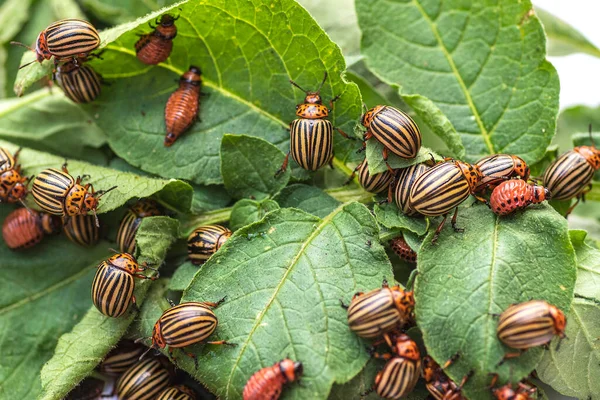
The Colorado potato beetle (Leptinotarsa decemlineata) is a significant pest for potato crops, measuring about 10 mm long with a bright yellow-orange body and five bold black stripes on each wing. Native to the Rocky Mountains, it spread rapidly across North America and Europe after its first observation in 1811. The larvae are orange-pink with a black head and can grow up to 15 mm in length.Farmers should monitor for these beetles, particularly during the growing season, as they can cause substantial damage to potatoes and other solanaceous plants like tomatoes and eggplants. Effective management strategies include crop rotation, using resistant varieties, and applying insecticides when necessary.
- Description: Striped yellow and black beetles that are notorious for feeding on potatoes and tomatoes.
- Damage: They defoliate plants, significantly reducing yields.
- Management: Handpick beetles or use neem oil as a deterrent.
24. Slugs
Slugs are soft-bodied mollusks without shells, commonly found in gardens and agricultural fields. They vary in size from 1/4 to 5 inches long and secrete a characteristic slime that leaves silvery trails. Common species include the Gray Garden Slug (Deroceras reticulatum), which is particularly damaging to crops, and the Leopard Slug (Limax maximus), known for its distinctive markings and less harmful feeding habits.Farmers should be vigilant during moist conditions when slugs are most active, as they can cause significant damage to seedlings and mature plants alike. Signs of slug activity include chewed leaves and slime trails. Effective management strategies include encouraging natural predators, using barriers, and applying organic methods like diatomaceous earth or iron phosphate bait.
- Description: Slimy, soft-bodied creatures that can be found in damp areas.
- Damage: They chew irregular holes in leaves and can devastate seedlings.
- Management: Use beer traps, handpick them, or apply diatomaceous earth around plants.
25. Gooseberry Sawfly
The gooseberry sawfly is a notable pest affecting gooseberry and currant plants, primarily represented by three species: the common gooseberry sawfly (Euura ribesii), the pale spotted gooseberry sawfly (Euura leucotrichus), and the small gooseberry sawfly (Pristiphora appendiculata). The larvae of these sawflies are caterpillar-like, typically pale green with black spots, and can cause significant defoliation by rapidly consuming leaves.Farmers should be vigilant from late April through September when the larvae are most active. Signs of infestation include stripped branches and excessive leaf damage. Management strategies involve regular monitoring, handpicking larvae, and promoting biodiversity to encourage natural predators.
- Description: Larvae that are green and caterpillar-like, they target gooseberry and currant plants.
- Damage: They can strip leaves off plants very quickly.
- Management: Handpick larvae or use insecticidal soap for control.
26. Tortoiseshell Larva
The Tortoiseshell larva, specifically from the Small Tortoiseshell butterfly (Aglais urticae), is commonly found on nettles. These caterpillars are initially small and green with black heads, growing up to 22 mm in length. They feed communally, often damaging nettle plants.Farmers should monitor for these larvae during the growing season, especially in areas with nettles. Effective management includes handpicking or encouraging natural predators to control their populations.
- Description: The larval stage of the tortoiseshell butterfly, these are fuzzy and black.
- Damage: They feed on a range of plants, leading to defoliation.
- Management: Encourage birds to feed on them or use organic insecticides if necessary.
Conclusion: Stay Vigilant and Proactive
Understanding the various garden pests and how to manage them is key to maintaining a healthy garden. Regular monitoring, maintaining plant health, and employing natural pest control methods can help you keep these enemies at bay. Remember, a thriving garden is one where plants can grow strong and healthy, and learning to manage pests is part of that journey.
By embracing eco-friendly practices, you not only protect your plants but also contribute to a sustainable gardening ecosystem. Happy gardening!
